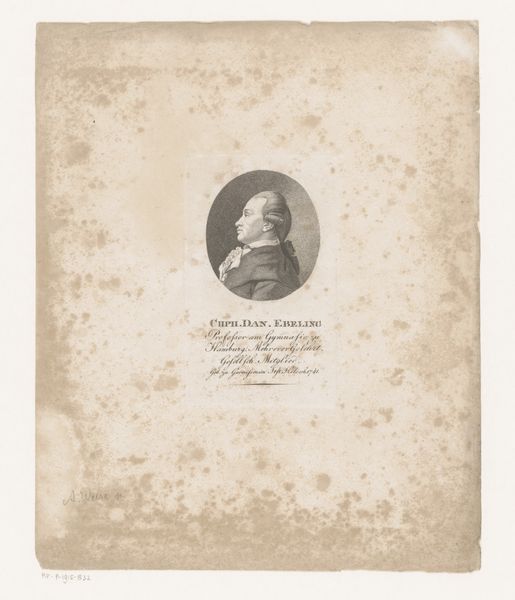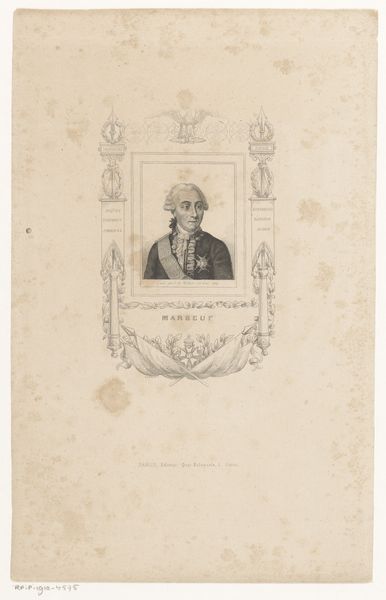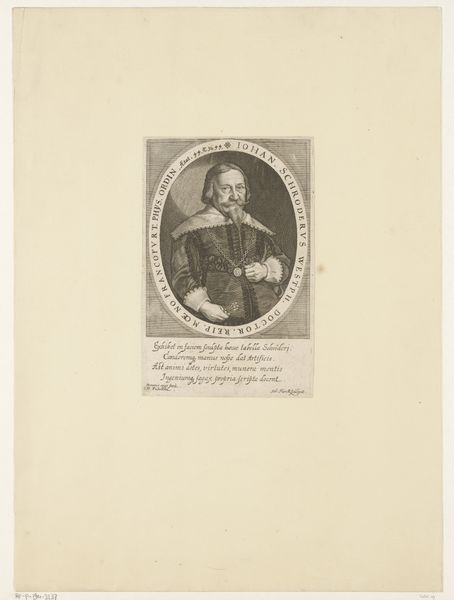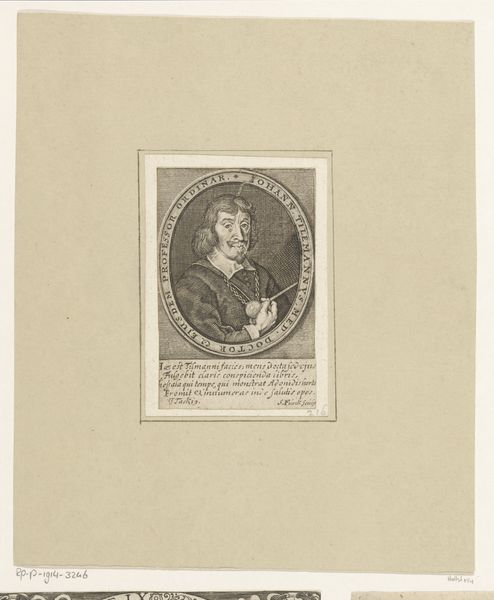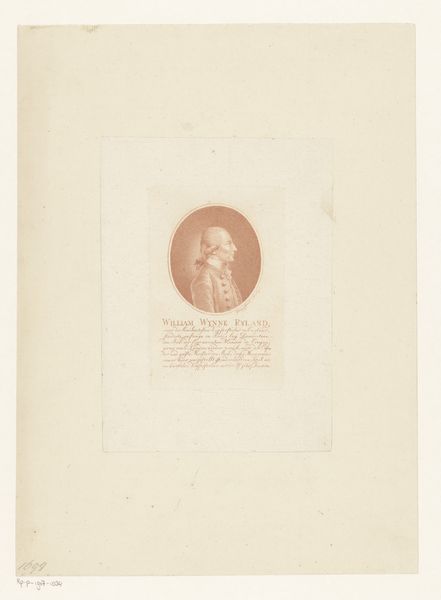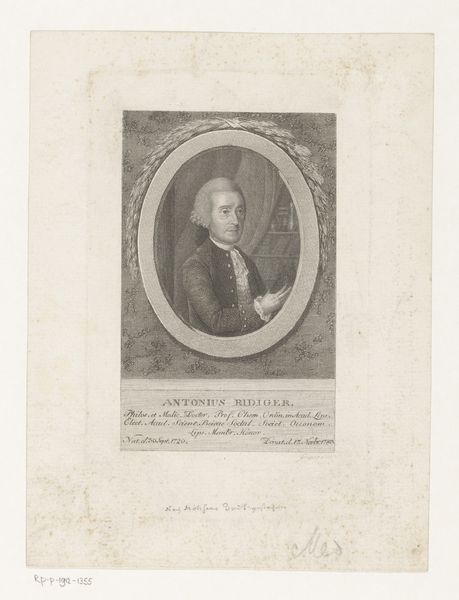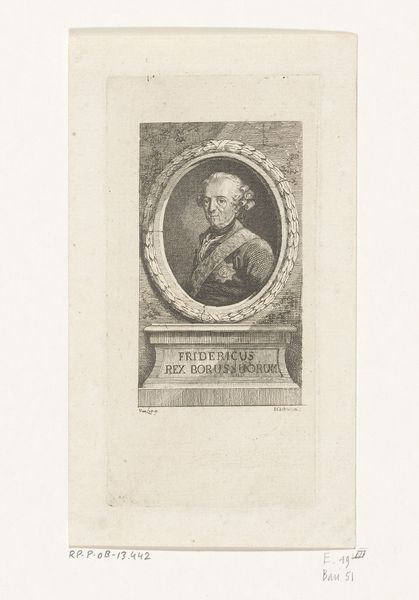
print, engraving
#
portrait
#
photo of handprinted image
#
aged paper
#
toned paper
#
light pencil work
#
pale palette
# print
#
old engraving style
#
ink colored
#
line
#
history-painting
#
golden font
#
engraving
Dimensions: height 122 mm, width 87 mm
Copyright: Rijks Museum: Open Domain
Curator: Before us hangs "Portret van Tycho Brahe," an engraving housed here at the Rijksmuseum. Its creation is situated sometime between 1775 and 1834, offering us a glimpse into how Brahe was visually memorialized. Editor: The aged paper and faded ink lend it such a somber, reflective air. The man’s intense gaze from within that oval frame certainly holds your attention despite the simplicity. Curator: Indeed. Tycho Brahe's image became a powerful symbol within scientific circles and broader cultural narratives, particularly given his complex socio-political position as a nobleman deeply invested in scientific pursuits. He represents the shift occurring between traditional authority and nascent empirical methodology. Editor: Absolutely. The feathered cap, the elaborate ruff, the inscription below the portrait, it’s all communicating status and intellect. It’s as though the engraver carefully chose elements to embody Brahe’s layered identity. We also should consider how printed images disseminated scientific authority. This portrait would likely have graced the pages of scholarly works or perhaps even circulated as a single, revered image amongst his followers. The visual cues create almost an iconic representation. Curator: Yes, and the very act of creating and circulating such images reflects a certain power dynamic, where portraying individuals becomes a way of inscribing them into the annals of history and conferring a particular kind of legacy, or agenda, I'd argue. Editor: It’s also interesting to consider what specific qualities the artist chose to amplify about Tycho Brahe—perhaps courage, wisdom, an inquisitive nature. These become attributes now inextricably linked with his name. We see history not just as factual narrative but also as a constructed image. Curator: Looking closely, this piece speaks volumes not only about Tycho Brahe but also about the methods and politics involved in crafting historical figures through art, echoing societal values and power relations of the era. Editor: Agreed, and analyzing it further unlocks dialogues around image-making, commemoration, and the encoding of cultural meaning through artistic representation across time.
Comments
No comments
Be the first to comment and join the conversation on the ultimate creative platform.

